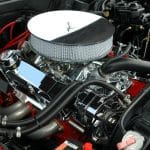Few things can compare to the sense of freedom experienced when riding a horse. The bond between human and horse is unique and can be quite powerful. One of the essential aspects of ensuring this bond is a comfortable experience for both parties involves choosing the right type of saddle. A horse’s comfort and performance directly depend on the fit and type of the saddle you select. In this article, you will learn about different types of saddles, how to choose the perfect one for your horse, and how it affects the horse’s health and performance.
Understanding the Importance of the Right Saddle
Before diving into the different types of saddles, it’s crucial to understand why choosing the right saddle is vital. Saddles are not just for the rider’s comfort, but they have a significant impact on the horse’s comfort and well-being. Also, they can influence the horse’s movement and performance.
A lire également : What Are the Best Tips for Traveling with Pets on Public Transportation?
Improper fitting saddles can cause numerous issues for the horse, such as discomfort, irritation, and even injuries. On the other hand, a well-fitting saddle can enhance your horse’s natural movements and increase its overall performance. Therefore, understanding your horse’s needs and your riding style is key to choosing a saddle that will work best for both of you.
Saddle Types and Their Uses
There are various types of saddles available, each designed for specific uses and riding styles. The main categories include the English saddle, Western saddle, and other specialized saddles.
En parallèle : How to Manage and Treat Common Skin Conditions in Pets Naturally?
-
English Saddles: These are smaller and lighter than Western saddles. They’re designed for equestrian activities like eventing, dressage, racing, and jumping. Because they’re less restrictive, English saddles allow the rider more freedom to move and adjust their balance.
-
Western Saddles: They’re heavier than English saddles and have a horn at the front. They are designed for long hours of riding and are commonly used in rodeos, trail rides, and working with livestock. They offer more support and comfort for the rider, enabling them to stay in the saddle for longer periods.
-
Specialized Saddles: These are made for specific activities such as endurance riding, polo, or trail riding. They’re adapted to suit the particular demands of these activities, providing the necessary support and comfort for both the rider and the horse.
Considerations When Choosing a Saddle
There are several factors to consider when choosing a saddle for your horse. Remember, the perfect saddle is not a one-size-fits-all kind of deal. It should be chosen based on a few critical factors.
-
Horse’s Size and Breed: Horses, like humans, come in different sizes and shapes. A saddle designed for a thoroughbred won’t necessarily fit a draught horse. It’s essential to take accurate measurements of your horse’s back to ensure the saddle fits correctly.
-
Riding Style: Your preferred riding style can determine the type of saddle you need. If you’re into dressage, an English saddle would be the best choice. If you’re a trail rider, a Western or an endurance saddle would be more comfortable.
-
Rider’s Comfort: Lastly, the saddle should be comfortable for you as well. It should provide a secure and comfortable seat, allowing you to maintain your balance and control.
Fitting a Saddle to Your Horse
Fitting a saddle to your horse is a process that requires time, patience, and preferably the help of an experienced saddle fitter. An ill-fitting saddle can lead to discomfort, pain, and even long-term damage to your horse’s back.
Understanding your horse’s anatomy is the first step in saddle fitting. You should be aware of your horse’s spine and where the saddle should ideally rest. Generally, the saddle should fit comfortably behind the shoulders and shouldn’t extend beyond the last rib.
The width of the saddle tree, which is the frame of the saddle, should match the width of your horse’s back. It should distribute your weight evenly across the horse’s back, without pressing on the spine.
The gullet, which is the channel that runs down the center of the saddle, should provide enough clearance for the horse’s spine and not interfere with the movement of the horse’s muscles.
Remember to regularly check the fit of your saddle as horses can change shape over time due to age, weight fluctuations, and exercise routines.
Choosing the right saddle for your horse is not just about comfort; it’s about ensuring the health and happiness of your horse. By taking the time to select a well-fitted saddle, you’re investing in your horse’s well-being and maximizing their performance potential. So saddle up, and happy riding!
Saddle Materials and Their Impact
Another crucial aspect to consider when choosing a saddle is the material it is made from. The primary materials used in saddle construction are leather, synthetic, or a combination of both.
Leather saddles are traditionally the choice of experienced riders due to their durability, comfort, and aesthetic appeal. They tend to be more expensive but, with proper care, can last for years. Leather saddles often require a break-in period to mold to the shape of the horse’s back and the rider’s seat, providing a custom fit over time.
Synthetic saddles are lightweight, affordable, and require minimal maintenance. They’re often preferred by beginners or casual riders. While synthetic materials can’t match the lifespan of a well-cared-for leather saddle, they are easier to clean, more resistant to weather conditions, and available in a variety of colors.
Combination saddles are designed to offer the best of both worlds. They usually feature a leather seat and knee pads for comfort and grip, combined with synthetic flaps and skirts for durability and ease of maintenance.
Choosing the right material for your saddle ultimately depends on your personal preferences, budget, and the amount of time you are willing to dedicate to saddle care.
The Role of the Saddle Pad
The saddle pad plays a pivotal role in your horse’s comfort and can significantly affect the fit of the saddle. It provides an extra layer of cushioning between the saddle and the horse’s back, helping to distribute the rider’s weight evenly and minimize pressure points.
Choosing the right saddle pad is just as important as choosing the right saddle. It should be appropriately sized to your saddle and horse, made of a durable and breathable material, and provide sufficient padding without altering the fit of the saddle.
There are numerous types of saddle pads available, each designed for specific uses and conditions. For instance, wool pads are known for their excellent shock absorption and natural moisture-wicking properties, while gel pads offer superior cushioning and are ideal for horses with sensitive backs.
To ensure the best possible fit, the saddle pad should be used when fitting the saddle. This allows the saddle fitter to take into account the thickness and shape of the pad when assessing the fit of the saddle.
Conclusion
Choosing the right type of saddle for your horse is a multifaceted process that requires careful consideration and understanding of your horse’s size, breed, and anatomy, as well as your riding style and comfort needs. It’s not just about finding a saddle that looks good or fits your budget—it’s about finding a saddle that will ensure your horse’s comfort, health, and performance.
Remember, the perfect saddle is one that fits both you and your horse perfectly, enhancing your riding experience and promoting a positive and powerful bond between you. It’s essential to invest time and effort into finding the right saddle, as it can significantly impact your horse’s well-being and performance.
Always seek professional advice if you’re unsure about any aspect of saddle fitting, and don’t hesitate to try different saddles until you find the one that works best for you and your horse. Your commitment to your horse’s comfort and health will not only contribute to their happiness but will also enhance your riding experience, making every ride more enjoyable for both of you. With the right saddle, the unique bond between horse and rider can truly flourish.











